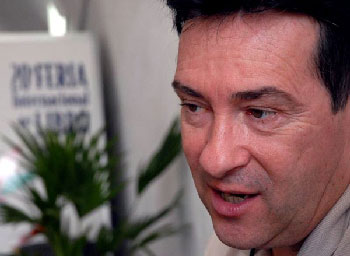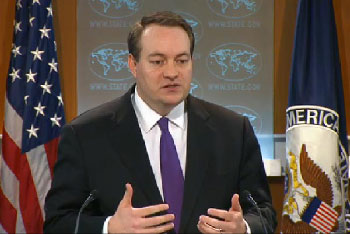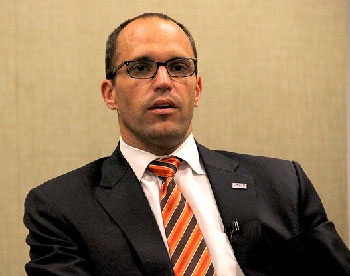USAID/Cuba, a Schizophrenic Policy
By Tracey Eaton (alongthemalecon.blogspot.com)

HAVANA TIMES — If Washington’s policies toward Havana were a person, the poor soul would likely be confused, maybe even schizophrenic.
U.S. officials try to starve Cuba into submission with economic sanctions for more than five decades.
Then they undermine sanctions by allowing Cuban-Americans to travel freely to the island, dumping fistfuls of cash on the island.
Regime-change programs – democracy programs, whatever you call them – are another peculiar feature of the U.S. approach.
The U.S. Agency for International Development, or USAID, has spent more than $200 million on these programs since 1996. They are explicitly designed to influence internal affairs in Cuba and boost freedom. And no matter how noble the cause might be, the programs are at odds with development work in most parts of the world.
The programs also operate under increasing secrecy at a time when governments and NGOs move toward greater transparency. See, for instance:
- Publish What You Fund, a global campaign for aid transparency
- aidinfo, which promotes development aid accountability, and
- Avco openaid, designed to show people how development funds are being spent around the world.

Even the U.S. government has gotten into the act with its Foreign Assistance Dashboard, which tracks foreign aid, and its so-called Greenbook, a historical record of U.S. aid to the rest of the world and USAID’s release of new datasets and technological tools meant to boost transparency (See April 30 announcement).
But Uncle Sam’s initiatives have done little to reduce the secrecy surrounding USAID’s Cuba programs, which remain unlike development programs in most of the world.
Take the case of the United Kingdom. The foreign secretary there dispenses development aid only if he is convinced that the money “is likely to contribute to a reduction in poverty.”It’s not just a pledge – it’s written into the law. See International Development Act 2002.
In sharp contrast, a key U.S. government goal in Cuba is to increase poverty, not reduce it.
Keith Bolender writes in his 2012 book “Cuba Under Siege”: “…There is ample evidence to suggest that America is enacting collective punishment on the people of Cuba with the intent of precipitating the overthrow of the socialist experiment…”
Douglas Dillon, under secretary of state during the Kennedy administration, helped set the tone in 1960 when he said it was Washington’s duty to cause “rising discomfort among hungry Cubans.”
The strategy continued in the 1970s, according to “Cuba Under Siege,” which quotes a CIA officer as saying: “We wanted to keep bread out of the stores so the people would go hungry.”

Efforts to suffocate Cuba continue today. Yet while trying to squeeze the Cuban economy, American officials also allow Cuban-Americans to send more than $1 billion in remittances to their families every year. It’s a sensible humanitarian gesture, but it erodes the impact of the sanctions that U.S. officials so carefully enforce.
Time passes and these contradictory measures remain in place, ever more ingrained, part of aninstitutionalized machinery that has cost American taxpayers hundreds of millions of dollars.
In February 2012, Desmond Butler of the Associated Press focused on one piece of that machinery – a USAID program that sent American Alan Gross to Cuba to set up a satellite Internet network. Butler’s article began:
“Piece by piece, in backpacks and carry-on bags, American aid contractor Alan Gross made sure laptops, smartphones, hard drives and networking equipment were secreted into Cuba.
The most sensitive item, according to official trip reports, was the last one: a specialized mobile phone chip that experts say is often used by the Pentagon and the CIA to make satellite signals virtually impossible to track.”
Tom Paulson, a former reporter at the Seattle Post Intelligencer, wrote that the AP story added to an “ongoing discussion within the federal government about ‘re-inventing foreign aid.'”
Paulson runs a website called Humanosphere, which analyzes the latest news in global health, development and poverty. He was strike by the AP’s claim that Gross was smuggling satellite telephone cards that aren’t available to the public and are “provided most frequently to the Defense Department and the CIA.”Paulson said U.S. officials said Gross “was just carrying out the normal mission of USAID.” He wrote:

“Huh? This is the normal mission of USAID? This is certainly normal for the CIA, or those other branches of government legitimately set up to undermine authoritarian regimes around the world….
“But is it wise, and in our long-term interest, to be enlisting USAID in this cause as well?
“Should the agency that was set up primarily to bring food to the starving, medical supplies to the injured or otherwise engage in America’s humanitarian causes overseas also be doing covert political work against hostile foreign governments?
“Is there a need to more clearly delineate foreign aid from foreign policy?”Some countries have objected to USAID’s intrusions. Russia kicked out the agency in September 2012.
On Wednesday, President Evo Morales announced that his government would expel USAID from Bolivia.
USAID had operated in Bolivia since 1964. Juan Ramón Quintana, minister of the presidency, said today that the agency did not reduce poverty in the country. Instead, it directly interfered in Bolivian affairs from 1985 to 2005 and sought to maintain “political control” over Bolivia, Quintana said.

“No one said anything” because ruling political parties benefitted from the “rain of dollars,” he said.
“We have done rigorous research and what Bolivia should know is that the United States has not destined money for distribution to the poor, but rather to preserve its strategic interests outside its borders.”
State Department spokesman Patrick Ventrell told reporters that Bolivia’s accusations were “baseless.” He said the agency’s goal was not political meddling, but “to help the Bolivian government improve the lives of ordinary Bolivians.”
Whatever the case, Bolivia’s move was not a surprise. In June 2012, Bolivia along with Cuba, Ecuador, the Commonwealth of Dominica, Nicaragua and Venezuela signed a document calling for the expulsion of USAID from their borders.
The document stated: “…USAID, through its different organizations and disguises, acts in an illegal manner with impunity, without possessing a legal framework to support this action, and illegally finances the media, political leaders and non-governmental organizations, among others.”
Despite that glaring diplomatic red flag, “Bolivia’s decision to expel USAID came as a shock to the United States, as no one in Evo Morales’ government had complained about the U.S. development agency’s activities,” Agence France-Presse reported Thursday.

Mark Lopes, deputy assistant administrator for USAID’s Bureau for Latin America and Caribbean, told AFP that the agency had heard grumblings about USAID from the Bolivian government, but “we always found cooperative partners and government officials within all levels of government.”
Either the AFP story is inaccurate or Lopes is incredibly disingenuous. Bolivian officials had signed a document calling for the expulsion of USAID. That is not a mild complaint or a “grumbling.” That is a message telling USAID to start packing its bags.
On the issue of transparency, Lopes told AFP: “This idea that we’re not transparent, not telling who we’re funding, is simply false.”
—–
Link: State Department cable outlining USAID strategy in Venezuela in 2006.
Note: This article was shared with the Center for Democracy in the Americas as part of a six-month collaborative project with the non-profit group. See more about our collaboration here.






Burgess, your personal anecdotal experience is misleading. The empirical evidence gathered tells another story. But you are right, Cuba does evoke a love or hate impression. Why do you think Capriles is funded by the US? Because, if elected, he appears to be more likely than Maduro to have a relationship with the US? Wow, hard evidence! Thank you for considering my comments to ‘blessings’.
The official conversion rate is 1:1, the CADECA rate is 25:1. This discrepancy has caused a phenomena called marked segmentation, where different economic agents interact with the two currencies and amongst each other using different rules.
When state owned enterprises or public services need supplies available only in CUC they acquire them at 1:1 rate, while the the private sector and individuals who need CUC have to use the CADECA rate of 25:1.
http://en.wikipedia.org/wiki/Cuban_peso#The_CUP_and_the_CUC
The true conversion rate should have been way lower than the initial 25:1, the 14:1 comes from applying a 3% inflation rate on the USD (pegged to the CUC) over 20 years to the original 25:1 rate and in a fair world the rate should be favoring the CUP instead of against it. But this is not a fair world, not by any stretch of imagination.
As for the black market, well, as every unregulated market is opportunistic and is NOT going to fall down the official conversion rate on its own but follow closely the CADECA one. That said, you should compare the black market prices of products and services, not the currencies. But the black market is a complex mosaic and the available data pretty bad and that renders useless almost any analysis.
And no, the creation of the CUC has no role whatsoever in the taxation of dollar, you can achieve that by moving the CUP conversion rate at will. The only advantages of the CUC is that it serves to inflate artificially the value of the labor with foreign partners allowing the government cash the difference and as I mentioned before, it masks the huge income disparity.
The way it works, a foreign or mix business operating in Cuba pays their wages in CUC at 1:1 conversion rate to an intermediate agency that collects the money and pays the workers in CUP at 1:1 rate. The difference in value, of course goes to the government. This is pretty stupid, because turns the huge advantage of a cheap, qualified labor force in the international market into a less competitive mess of disgruntled employees tired of being skinned by their own government.
As for the last point, you must understand that the concept of tax is foreign to them and has been so for more than 50 years. Cubans do not pay taxes, their meager salary all theirs to use and they have no clue about what GST means. The only ones paying any kind of taxation are the self-employed, but thats a big joke, since they usually only pay a fix rate and rarely any income tax at all and the government don’t get a share of the product and service they offer.
The decision to create the CUC was ideological in nature, because they can’t simply answer how is possible that a waitress earns 10 times more income than a surgeon, so they created this little counting trick to keep things in check and their little utopia floating.
But that was a big mistake and they are paying dearly the consequences. As a result of political cowardice, their economy is completely messed up, so any policies they try to implement is completely ineffective because of the complexity that the two currencies introduce, to the point that even the most basic questions (i.e. is sugar production profitable?) can’t be answered categorically.
And of course, it didn’t solve the issue of income disparity in the population, because regardless of what the official accountability said, the waitress is still earning 10 times as much as the surgeon and it can help but reflect in her standard of life.
I find these comments really interesting and would be great if you did a full article in HT. Unfortunately I don’t understand everything. It would seem daft to apply a 1:1 for accounting when there is an exchange rate 1:25. Where and why would they publish this data. Are you saying that the true conversion rate would be 1:14 — If so wouldn’t that mean that you would get an unofficial rate on the black market rather than the official exchange rate. Why would unifying the currencies create inflation if the rate of CUPs were set to their true value?
Also wasn’t the creation of CUCs a way of applying tax on dollar exchanges and therefore redistributing some of wealth given that not everyone had relatives who could send them remissions. Wasn’t there some benefits of having two currencies in that the CUP is protected to some extent from international currency fluctuations, unlike for example the crisis in the Eurozone?
Finally wouldn’t some of the problems be sorted if they took some money back off the waitress or people working in tourism / joint ventures. This could be by taxing them on the estimated real value of their wages or by reducing their pay and then using this to pay more to professionals in other sectors. A bit harsh I know, but probably necessary.
I have been going to Cuba for over twenty five years and one of the things that has always amazed is the amount of people who keep coming back.Cuba is a place you either love or you try it once and go somewhere else.For years people told me to go to Cuba but I listened to people like Moses instead of going and seeing for myself.And yes I think the US is funding Capriles .If Cuba is beyond salvation Moses would not feel he has to bless us with his words of wisdom every thirty minutes
I would like one or more of the spin masters who post here to explain operation Northwoods to me.I have read the officiat version.
And thats what both you and them get wrong: the CUC did not solved anything, since you STILL can easily get pretty much anything if you have enough of money in either currency.
The only thing the CUC achieved was to MASK the income differences amongst the population and provide a gateway to a market segmentation structure designed to milk as much hard currency as possible. The inflation is still rampant (apply the 25:1 rate to calculate it) and hoarding is a common occurrence (is actually the most common form of private enterprise, buying everything they can in the shops and reselling it at a bonus in CUP).
To realize the harsh truth of my words, the only thing you have to do is convert everything to a single currency, apply the price structure of the “unregulated” market (CUC) in your currency of choice and do the same to the national markets (CUP) at the 25:1 rate. Finally, build a price index in this unified currency and compare it to the average wage converted to the same currency, then add the value of the products in the ration book at the same price as hidden subsidy and THEN you can compute inflation by doing the same year after year.
The results are going to be a little shocking, the Cuban workers wages are NOT crude 25 USD equivalent you are used to hear everywhere, but is a far cry from the average income of a similar sized country and development level and the inflation is simply egregious.
Well if this is the case, then let your regime explain, how in their eyes tourist can ” promote” (US) democracy.
The primary reason the regime chooses to prohibit allowing the national peso (cup) to float against the CUC is because they realize that the CUP, should it gain purchasing power, would serve to cause further shortages in those few remainings goods it still purchases. Because there is a limited amount of sugar, coffee, eggs, vegetables, etc. the onset of rampant inflation would take hold and hoarding would become even more commonplace. The problem for Cuba, like all small socialists systems is the limited capacity to function as a managed economy in a capitalist world of prices that rise and fall. Even China struggles with this issue and artificially keeps the level of the yuan against the dollar low. Cuban economists realize this better than most but their words fall on the deaf ears of the Marxists zealots who continue to hold power in Cuba.
That may be true, but it was still a stupid move. The right way to do it would have been banning all sales in USD, forcing foreigners to exchange all currencies directly to CUP and offer all products and services exclusively in CUP.
The problem with the “right way” is that it makes painfully transparent the flows of capital, so people receiving remittances or with access to hard currency would have 25 times more income that the ones without and that would make the disparity too visible in the statistics. As I mentioned before, that would have undermined the principle of equality that is supposed to be a pillar of socialism.
Of course, the inequality exists the same in the dual currency model, but by cheating with the exchange rates they manage to hide them from the stats. As an example, a waitress in a hotel earns $120 CUP (way lower than the official minimum wages), plus $10 CUC average a day in tips (just a guess) for a grand total of $360 CUP (over 24 working days) by applying the official exchange rate of 1:1. Thats a comfortable amount well over the minimum wages but less than a professional should earn (a doctor earns $600 +/- $200 CUP based on several factors). The trick of course is that for the waitress the exchange rate is not 1:1 but 25:1, so her real income is equivalent to $6120 CUP, 10 times more than your median doctor wages.
The result? The social pyramid is completely distorted, doctors abandon the profession of saving lives to serve in menial tasks with access to hard currency, the economy is in a big mess and nobody has heard of finance policies but hey, the ideology is preserved and the precepts of socialism saved.
Of course there were other factors involved in the decision to apply a dual currency system, the most important is that it serves as an artificial barrier to an uncontrolled inflationary process because it is anchored to the USD. But as I explained elsewhere, their fear of inflation is simply ridiculous, and the solution is not to hide the head in the sand. The dollar is losing around 3% of its value yearly due to the *normal* inflation, but by keeping the CUC artificially paired to the USD, that loss of value translates directly to it and by keeping the exchange rates between the CUP and CUC artificially fixed, the purchasing power of the CUP (and with it of all government employees, around 90% of the work force) keeps spiraling down uncontrollably while what *should* have happened to keep up with the status quo is that the CUP should be gaining 3% value against the CUC every year.
That means that over 20 years the conversion rate should be around 14:1 just to keep the (already skewed) initial relative value between the two currencies. Of course there are other factors involved (like a moderate increase in wages, price fixings, etc) but the general picture is that the conversion rates should be way lower than the current CADECA rates
In addition to the reasons you gave, in early 2009 Obama quickly permitted sending remittances to Cuba without restriction because it was happening anyway by way of ‘mules’ bringing money during permitted family visits. By making it legal, he was able to get political credit for it within a changng Cuban community and it did not cost him anything. It gave him political brownie points which he redeemed for a record 48% turnout of the Cuban vote in 2012. Also, your comments regarding the dual money failed to mention the non-economic reasons Fidel created the CUC. He was pissed at Bush I for recently passed Torricelli Act so he created the convertible peso to replace the USD in circulation because of the Special Period crisis. He was not thinking about monetary policy or exhange rates or anything that high-minded. He was simply being the dictator who was reacting to a new US law that offended his pride. He also knew there were more dollars circulating on the street, feeding the black market than the Cuban Treasury had to use for foreign exchange. He assumed he could capture these needed dollars if he gave the people a peso they could use to ‘convert’ from dollars. If he used the national peso, he knew the exchange rate would soar, so he created the CUC.
Friedrich, one of Cuba’s biggest problems in building their tourism trade is the low return rate of tourists. Don’t take my word for it, look it up. As a result Cuba depends more heavily on new tourists every year. BTW, do you think USAID is funding Capriles? That’s ridiculous!
You are making a common mistake, US government goal has always been government change in Cuba, not necessarily squeezing them economically and in that light the changes in the remittance policies makes sense.
By allowing the Cuban-Americans to send remittances to Cuba, they are effectively creating a (comparatively) wealthy class outside of the control of the government and exacerbating the economical differences amongst the ones who have families in the exterior and the ones who don’t, breaking the equality principle that theoretically is a funding pillar of their society.
The side effect of course is that you can live better than less fortunate hard working people without doing really anything, and this simple fact has a two-fold benefit: in one hand it provides a strong incentive for Cubans to migrate (legally or not) to help their families, contributing to the continuous drain of trained human resources in the country, while in the other hand it effectively severs the dependency of said Cubans from the government wages while creating a friendlier attitude towards the good sides benefits of (developed) capitalism and potentially fertile grounds for dissidence.
Add to the mix that the arbitrary conversion rates between CUP and CUC are artificially inflated in favor of CUC, increasing considerably the value of the remittances received at the cost of the general population that ultimately pays the difference and you have a cost-effective program to undermine the bases of Cuban socialism that won’t cost them a dime (since is carried-out by well intentioned Cubans living abroad who are simply helping their families).
The fact that the Cuban government has been incapable to react to a well known situation highly detrimental to their interests that has been going on for two decades already tells you how fossilized is their chain of command regarding economy and finance policies and how delusional their claims of a central planning economy.
I’m not necessarily against central planning economy, when done right it has the potential to focus the efforts of the country and take it to the desired path (for example, China has made some brilliant -if somewhat heinous- moves that wouldn’t be possible without centralized, coherent policies that simply can’t be implemented in a market economy). The problem is, the results of that planning is a function of the quality of the information you have and the competence of the people making the decisions. The Cuban government shoot itself in the foot by implementing the two-currency policies with the sole objective to hide the differences in income amongst their citizens, and what I explained above is simple a side effect of this situation. The biggest problem is that by merging arbitrary rates, they introduced layers of complexity in a dynamic system already complex to begin with, and by doing so they rendered unreliable all information needed to make informed decisions, thus making a joke any kind of policy they may have.
The result is vodoo economics, plus the inept leadership that created the situation in the first place plus the increasing fear of blowing up the whole thing while trying to fix it, effectively freezing things in place and forcing them to solve the critical issues the country is facing by moving cowardly at glazier speeds.
Seems the above mentioned governments know all too precicely whom USAID is funding. Just ask Capriles in Venezuela.But USAID – according to my knowledge – also has the task to ” promote democracy”- and this coming from the White House sounds more than a threat than anything else. Its like letting people go to Cuba : not just for human reasons, but slowly ” promote democracy”. Whatever democracy might mean in the eyes of the US. Doesn`t really matter, people come to Cuba to meet their families or to go to the beaches and do not really have the missionary thrive to promote US ” democracy”. Contrarily, lots of the people, although being far from being communist – have a hidden sympathy for the Castros and a less hidden one for the Cubans and Cuba. Even for a Us – american it sounds like a miracle or fairy tale, that Cuba has resisted the US for such a long time. And to be honest, the Cubans care a damn about being ” promoted” by foreigners. The care about the Euros, Canadian or Australian dollars being given to them and certainly not about useless dicussions whether the White House or the Pentagon considers Cuba being a democratic or terrorist country or not. No one gives a penny about it. Nor the tourist nor the Cubans. That`s why they understand each other so well and lots of people like to come back to Cuba. I´m one of them. And I`m allowed to do so. Contrarily to USAID.